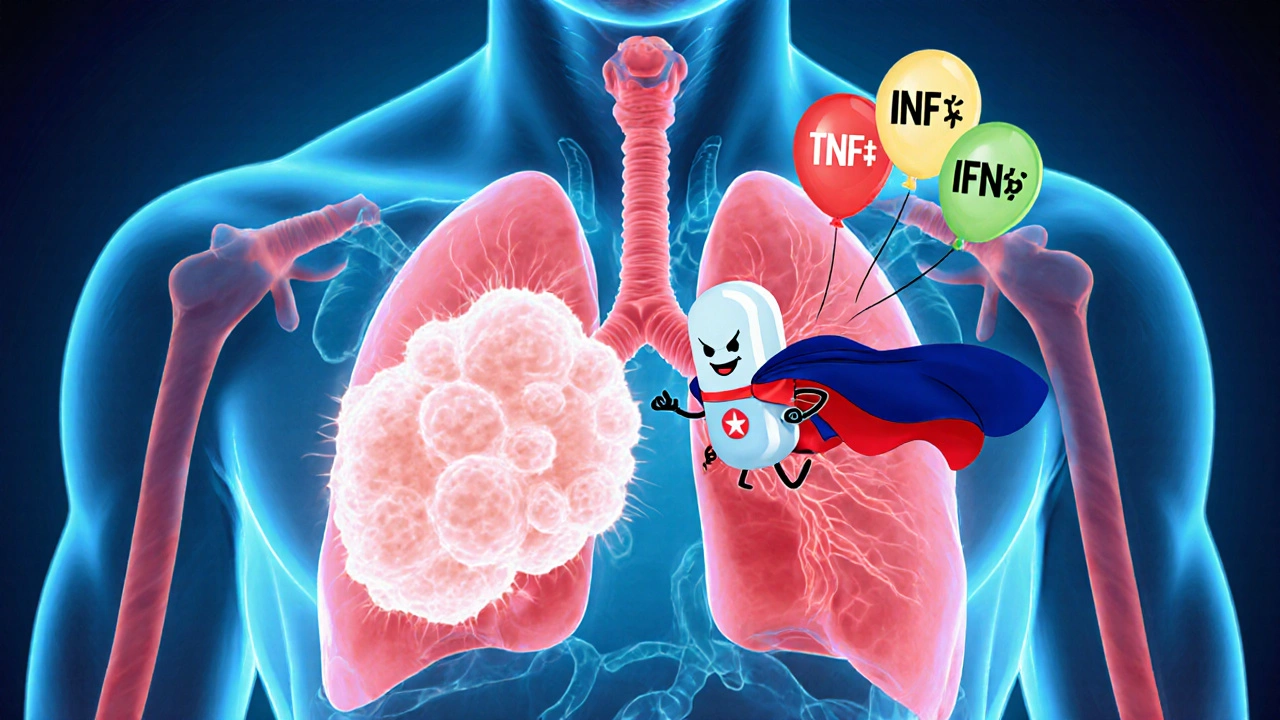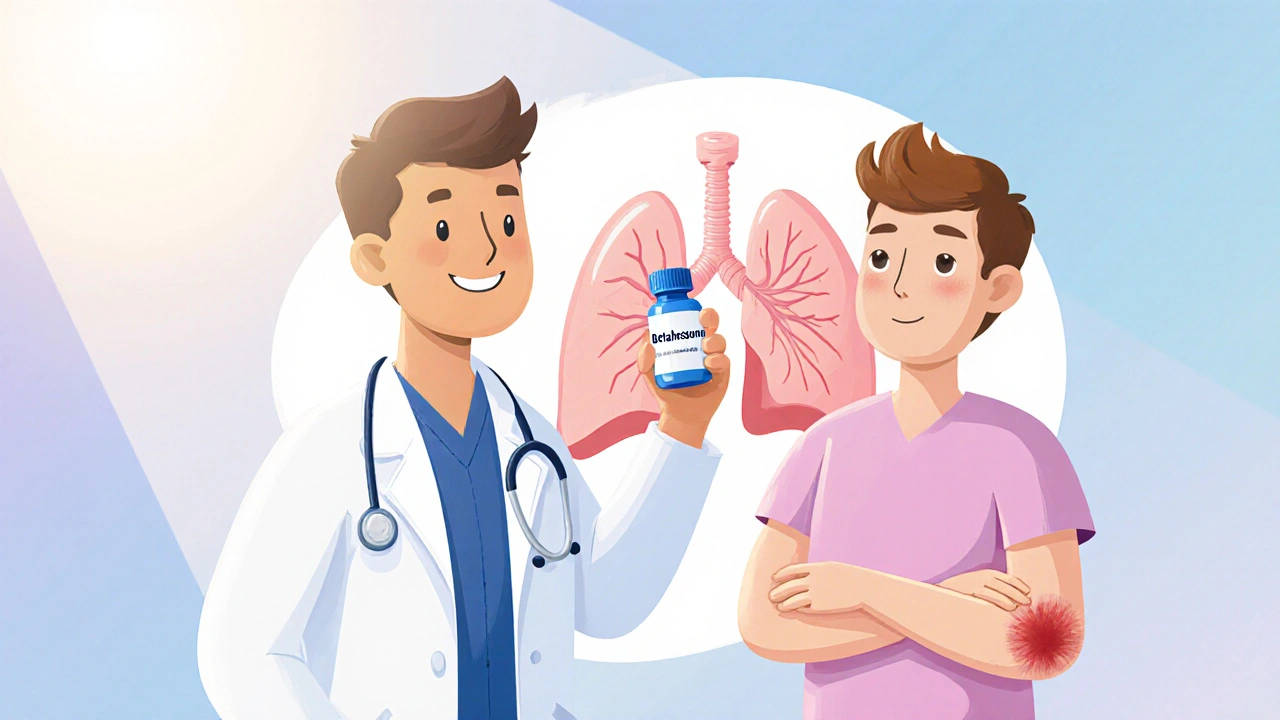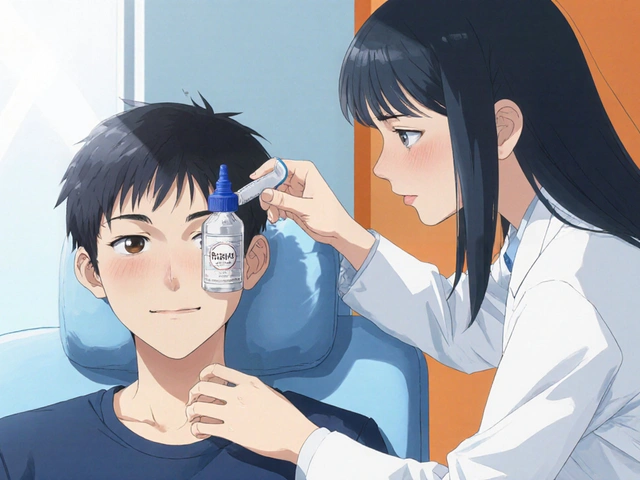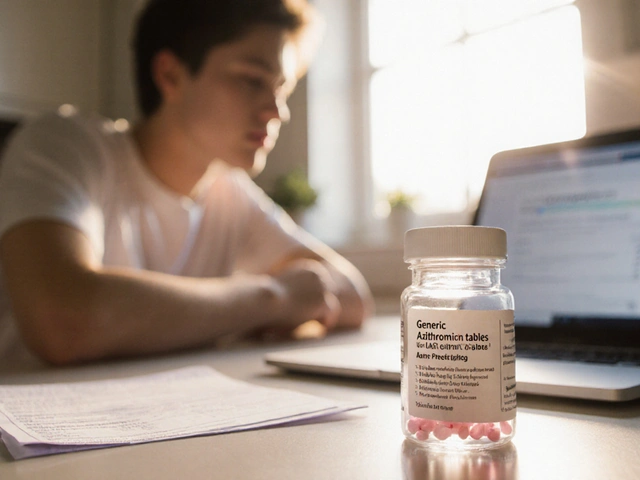Betamethasone Sarcoidosis Dosing Calculator
Treatment Guidance
Betamethasone is a high-potency glucocorticoid used for severe sarcoidosis when other steroids fail. Typical systemic dosing starts at 0.5-1 mg daily, then tapers based on clinical response. Always consult with a healthcare provider for personalized treatment.
Enter your weight and severity to see dosage recommendations
Side Effect Warning: Betamethasone carries risks including hyperglycemia, osteoporosis, and mood changes. Regular monitoring is essential.
Monitoring Recommendations
- Check fasting glucose quarterly
- Baseline DEXA scan for bone health
- Monitor blood pressure at each visit
Quick Takeaways
- Betamethasone is a high‑potency glucocorticoid that can control severe sarcoidosis when other steroids fail.
- Typical systemic dose starts at 0.5‑1mg daily, then tapers based on clinical response.
- Common side effects include hyperglycemia, osteoporosis, and mood changes - regular monitoring is essential.
- Inhaled betamethasone may help lung‑dominant disease with fewer systemic effects.
- Alternatives such as methotrexate or azathioprine are considered when long‑term steroid exposure is risky.
Betamethasone is a synthetic glucocorticoid that suppresses inflammation and immune activation. It is prized for its strong anti‑inflammatory power and long half‑life, making it a candidate for difficult cases of sarcoidosis.
Sarcoidosis is a multisystem granulomatous disease characterized by non‑caseating granulomas that can affect lungs, skin, eyes, and lymph nodes. The exact cause remains unknown, but an exaggerated immune response to an unidentified antigen is widely accepted.
Understanding Sarcoidosis
About 10‑20people per 100,000 develop sarcoidosis each year, with a peak between ages 20‑40. The lungs are involved in over 90% of cases, leading to cough, dyspnea, and reduced lung capacity. Skin lesions, eye inflammation, and enlarged lymph nodes are also common.
The hallmark on biopsy is non‑caseating granulomas organized clusters of macrophages and T‑cells without necrosis. These granulomas release cytokines like IL‑2 and IFN‑γ, driving chronic inflammation.
What Is Betamethasone?
Betamethasone belongs to the corticosteroid class of drugs that mimic cortisol’s actions. It binds to the glucocorticoid receptor a cytoplasmic receptor that translocates to the nucleus to regulate gene transcription, turning off pro‑inflammatory genes and up‑regulating anti‑inflammatory proteins.
Compared with prednisone, betamethasone is roughly 3‑4 times more potent per milligram and has a longer biological half‑life (≈36hours), which allows once‑daily dosing.
How Betamethasone Works in Sarcoidosis
When a granuloma forms, immune cells flood the site, releasing cytokines that recruit more cells. Betamethasone’s receptor binding reduces transcription of cytokines such as IL‑2, TNF‑α, and COX‑2, dampening the cascade that sustains granuloma growth.
Clinical improvement is usually seen as reduced cough, better exercise tolerance, and shrinkage of lymphadenopathy on CT scans. In skin disease, lesions soften and fade within weeks.

Dosing Strategies and Administration
For systemic disease, the initial dose is often 0.5-1mg oral betamethasone once daily, adjusted for body weight (≈0.02mg/kg). Severe cases may start at 2mg daily, but the goal is to find the lowest effective dose.
After 2‑4weeks, clinicians taper by 0.125‑0.25mg every 1‑2weeks, watching for relapse. Tapering is crucial because abrupt withdrawal can cause adrenal insufficiency.
In pulmonary‑dominant sarcoidosis, inhaled betamethasone (e.g., 0.5mg twice daily) can target airway inflammation while sparing systemic exposure. Nebulized forms are less common but useful when oral therapy is contraindicated.
Benefits and Evidence
Randomized trials from the early 2000s showed that betamethasone achieved radiographic resolution in 68% of patients with stageII-III lung sarcoidosis, outperforming prednisolone in speed of response. Real‑world registries in 2023 reported a 45% reduction in steroid‑related side‑effects when patients switched from prednisone to low‑dose betamethasone with a structured taper.
Key outcome measures include:
- Improved Forced Vital Capacity (FVC) by ≥10% predicted
- Decreased serum ACE levels, reflecting reduced granuloma activity
- Patient‑reported symptom scores dropping by 2 points on a 10‑point scale
Risks and Side Effects
Even low‑dose betamethasone carries classic glucocorticoid risks. The most frequent are:
- Hyperglycemia - monitor fasting glucose quarterly
- Osteoporosis - baseline DEXA scan, calcium/vitamin D supplementation
- Hypertension - check blood pressure at each visit
- Mood swings, insomnia - counsel patients about sleep hygiene
- Increased infection risk - vaccinate against influenza and pneumococcus before starting therapy
The FDA U.S. Food and Drug Administration requires a Risk Evaluation and Mitigation Strategy (REMS) for high‑dose systemic steroids, emphasizing regular monitoring.
Comparing Betamethasone with Other Steroids
| Attribute | Betamethasone | Prednisone | Methylprednisolone |
|---|---|---|---|
| Potency (relative to cortisol) | ≈4× | ≈1× | ≈5× |
| Half‑life | ≈36h | ≈12‑36h | ≈18‑36h |
| Typical starting dose (systemic) | 0.5‑1mg qd | 5‑20mg qd | 4‑8mg qd |
| Risk of hyperglycemia | Moderate | High | Moderate‑High |
| Bone loss risk | Low‑moderate (dose‑dependent) | Moderate | Low‑moderate |
Choosing the right steroid hinges on disease severity, comorbidities, and patient preference. Betamethasone’s convenience of once‑daily dosing often improves adherence.
Practical Tips for Patients and Clinicians
- Baseline labs: CBC, fasting glucose, lipid panel, liver enzymes, and DEXA.
- Schedule follow‑up at 2‑4weeks to assess symptom change and side‑effect profile.
- Educate patients about signs of adrenal insufficiency (fatigue, dizziness, nausea) during taper.
- Consider calcium 1,200mg + vitamin D 800IU daily to protect bone health.
- If long‑term steroid use is unavoidable, add a steroid‑sparing agent like methotrexate an antimetabolite that inhibits folate pathways and reduces immune activation at 10‑15mg weekly.
Remember that betamethasone is powerful but not a cure. Regular imaging (Chest X‑ray or HRCT) and functional testing (PFT) guide duration of therapy.
Frequently Asked Questions
Can betamethasone be used for skin‑only sarcoidosis?
Yes. Low‑dose oral betamethasone (0.5mg daily) or topical formulations can shrink skin plaques. Monitoring for systemic absorption is still needed.
How long does treatment usually last?
Most patients taper off within 6‑12months if disease control is achieved. Chronic refractory cases may require low‑dose maintenance for years.
Is inhaled betamethasone covered by insurance?
Coverage varies by region and plan. In many countries the inhaled form is listed under generic corticosteroid inhalers, so checking the formulary beforehand helps.
What are red‑flag symptoms that require immediate medical attention?
Severe shortness of breath, sudden vision loss, high fever, or signs of adrenal crisis (severe hypotension, confusion) should prompt urgent evaluation.
Are there dietary restrictions while on betamethasone?
Limit high‑sugar foods to manage hyperglycemia and keep calcium‑rich foods (dairy, leafy greens) to support bone health. Alcohol should be moderate because it can worsen liver side‑effects.









Write a comment
Your email address will be restricted to us